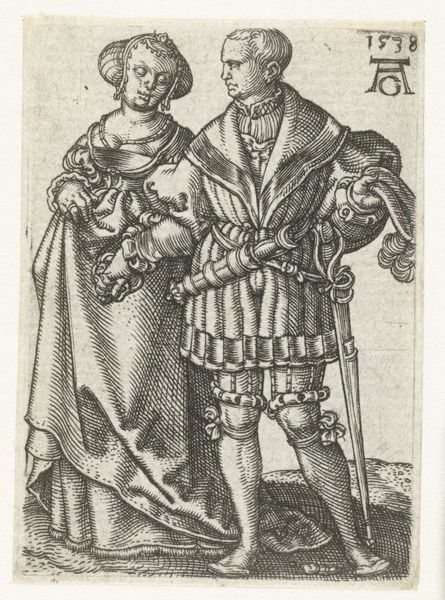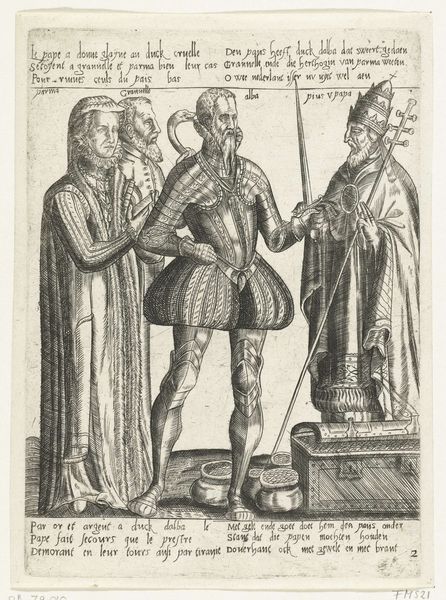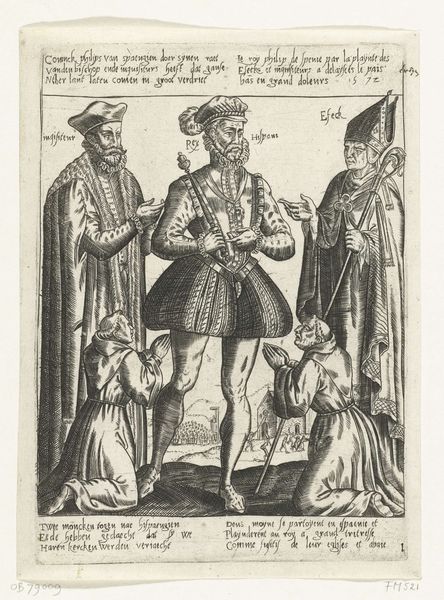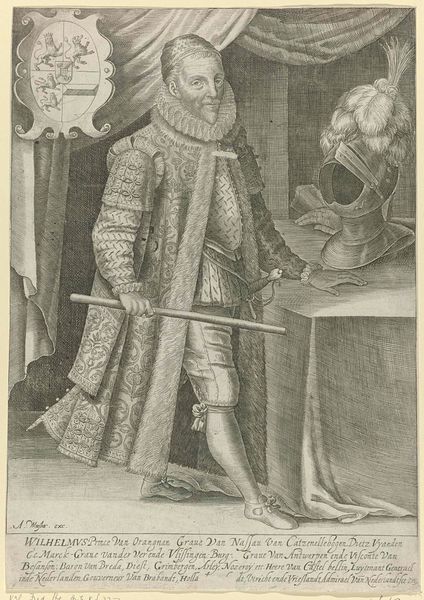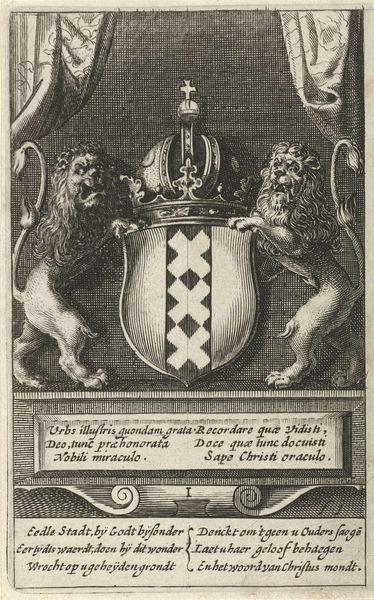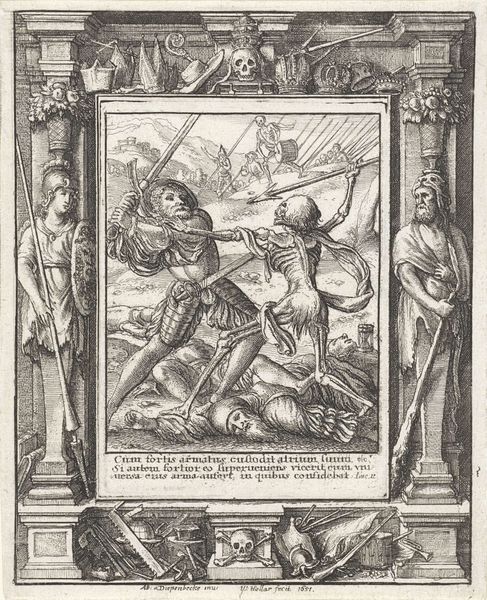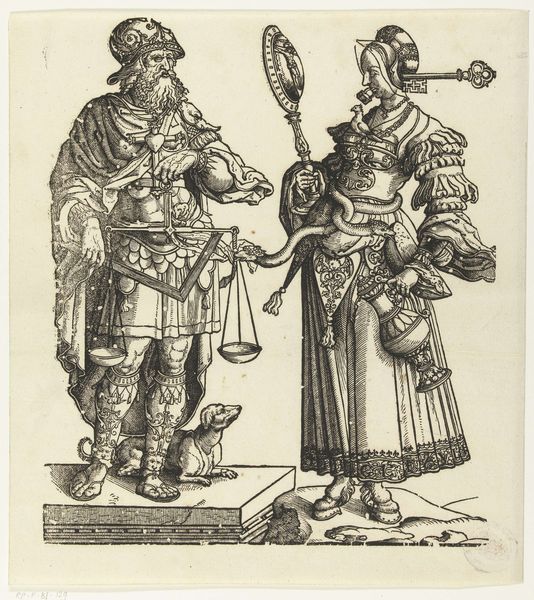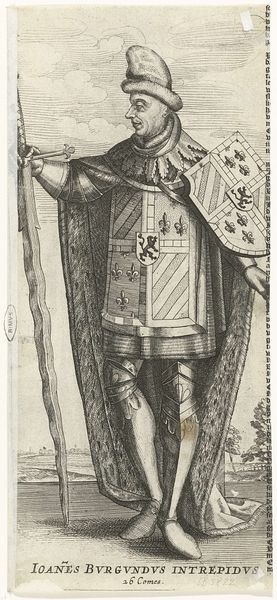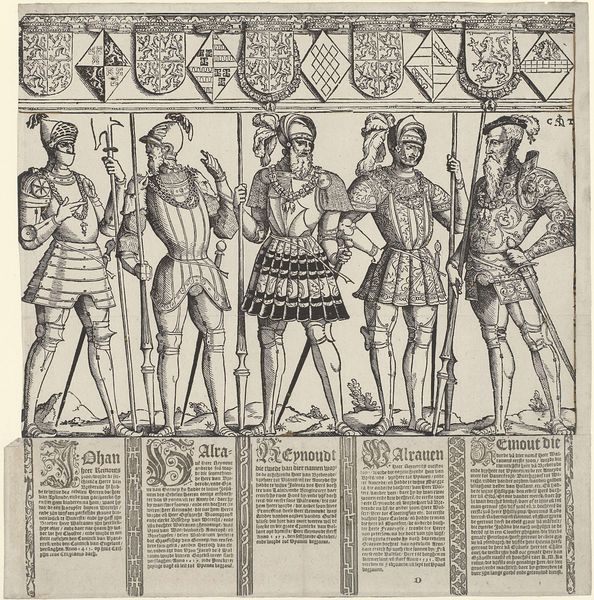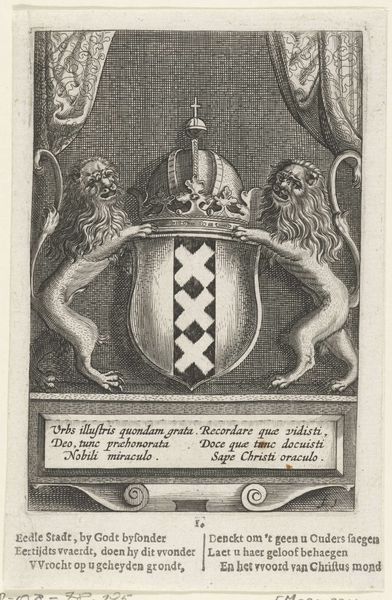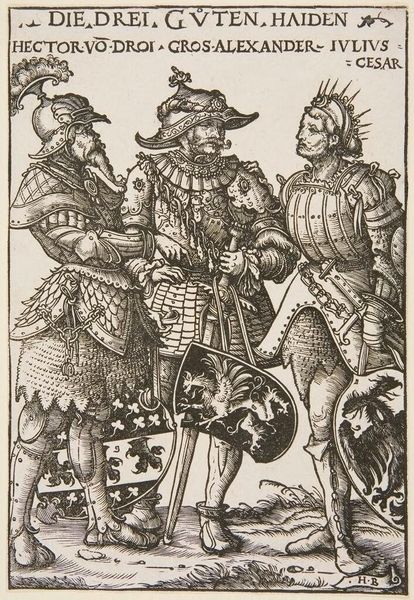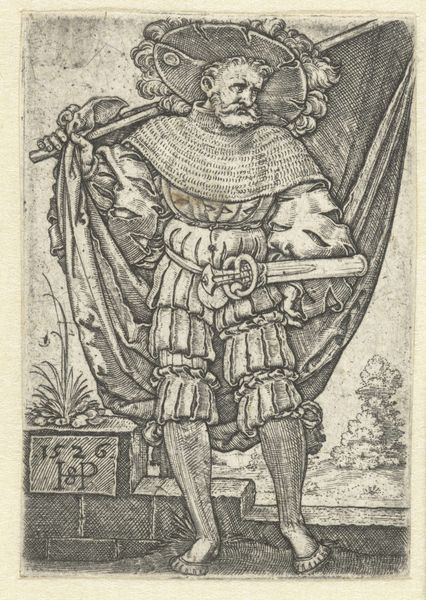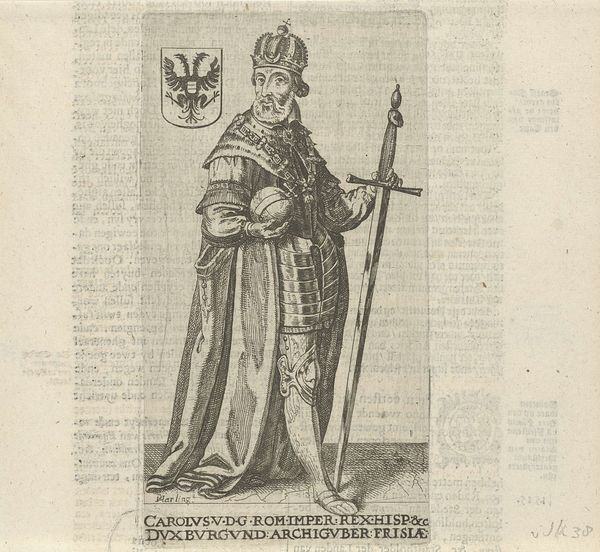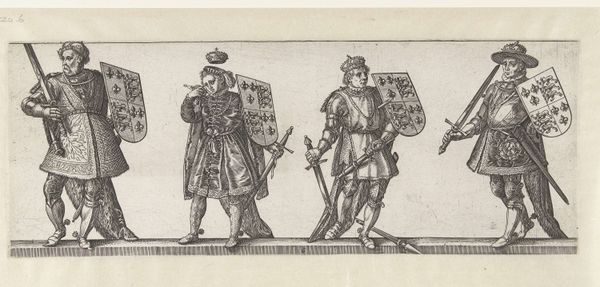
print, engraving
#
baroque
# print
#
pen illustration
#
old engraving style
#
history-painting
#
engraving
Dimensions: height 88 mm, width 47 mm
Copyright: Rijks Museum: Open Domain
Editor: So, here we have "Twee Polen," or "Two Polish Men," an engraving from 1627 by Pieter Serwouters, currently held in the Rijksmuseum. There’s something…stern about the whole composition. What do you see in this piece? Curator: Well, let's look beyond the surface. This isn't just a depiction of "two Polish men"; it's a visual statement deeply embedded in the geopolitical tensions of the 17th century. Notice the coat of arms and the Latin text at the top, "Respublica…Poloniae, Lituaniae, Prussiae, Livoniae, etc."? It speaks to a vast, complex territory, and the anxieties surrounding its status. Editor: Anxieties? Curator: Absolutely! Consider the Polish-Lithuanian Commonwealth. What do you know about that political entity and what’s implicit here? Editor: I know it was an elective monarchy, kind of a large republic. But was it actually stable? Curator: Precisely. This image exists within a context of external pressures and internal struggles. It uses visual shorthand – these "Polish men" – to represent the Commonwealth. Are they symbols of strength or vulnerability? How are they armed, what’s being guarded, and against what presumed threat? Editor: Hmm, one seems more like a traditional soldier and the other more ceremonial. That's quite a contrast. It's like there is a social commentary embedded within a political statement. Curator: Exactly! And that's where the real richness lies – dissecting those commentaries within a layered visual rhetoric of the era. This work reminds us that art, especially prints meant for wider circulation, can serve as propaganda, or political resistance depending on the cultural environment. Editor: I never thought about an engraving carrying so much weight! It makes you think about what narratives are being built. Curator: Indeed. These pieces call upon us to constantly engage critically.
Comments
No comments
Be the first to comment and join the conversation on the ultimate creative platform.
